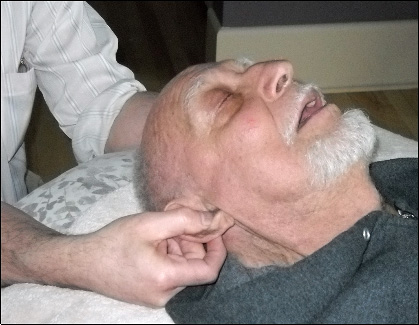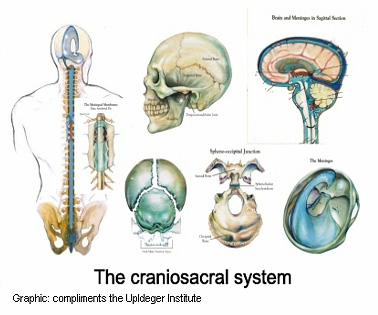
Cranial Vertigo
A simple description of the craniosacral system is that it includes the bones of the skull and sacrum at the base of the spine. They are connected by the membranes that surround the brain and spinal cord. These membranes are filled with fluid, cerebrospinal fluid, commonly called CSF. CSF volume and pressure fluctuates as the fluid is produced and rhythmically re-absorbed. In order to accommodate these changes, the skull must expand slightly as the system fills, and contract slightly as the fluid drains. The fluid drains back into the blood to be replenished with fresh fluid. Thus, the joints of the skull bones must expand and contract slightly. This causes all the bones of the skull to move in a characteristic pattern.
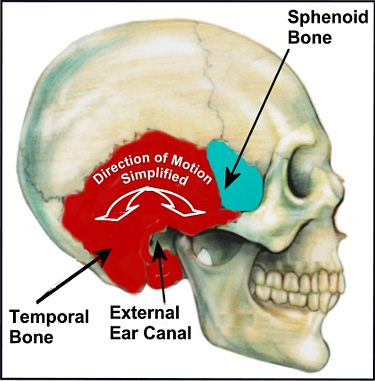
It’s all in the Temporal Bones
The bones that relate to balance are the temporal bones. The temporal bones are the paired bones on either side of the head to which our ears are attached. Deep inside the temporal bones, past the eardrum and the air-filled middle ear, is the fluid-filled inner ear. Both the organs for hearing and balance reside within the inner ear. The organs for rotational balance are called the semi-circular canals. There is one set of 3 semicircular canals on each side of the head. They are like tiny fluid-filled gyroscopes that tell us when our head or body is turning.
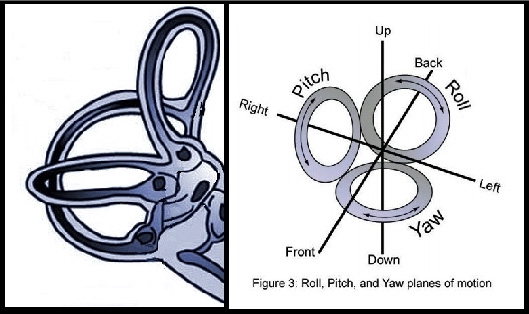
Abnormal movement of the temporal bones upsets the fluid dynamics in the semi-circular canals, causing pitch, roll or yaw. It is as if we are in an airplane spinning out of control, or in a rocking boat.
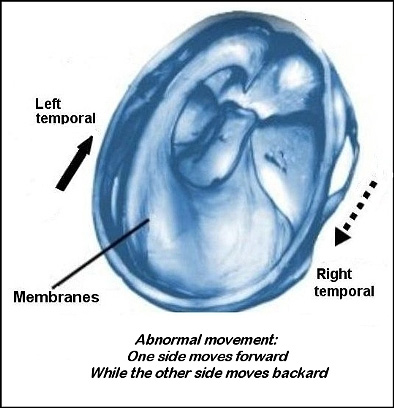
Normally, the temporal bones move in sync, forward and backward, (and in and out). But if something such as a blow to the head or body, or internal stress on the craniosacral system knocks the bones out of alignment, vertigo results.
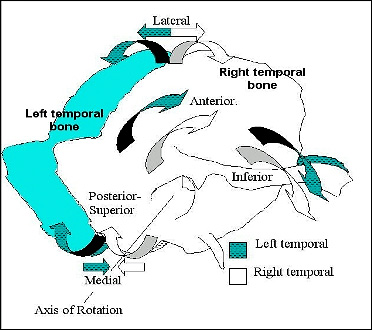
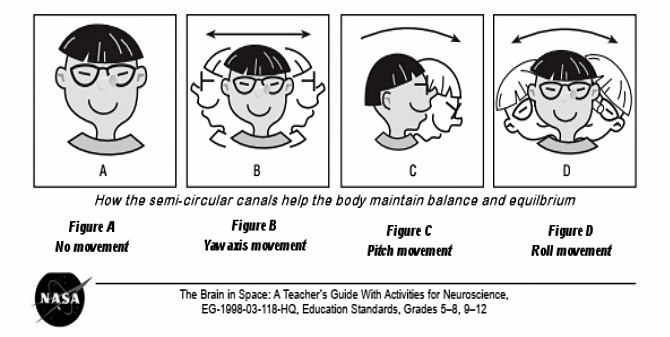
Since the movement of the temporal bones is so complex, restrictions can cause problems in the semicircular canals along many different planes. This causes differing sensations of dizziness. It is as if your head or body were moving in yaw, pitch or roll, or, a combination these, when your head or body is not actually moving. Sometimes, people feel as though the environment is moving. Other people feel as if their body is moving. However, no movement at all is occurring.
